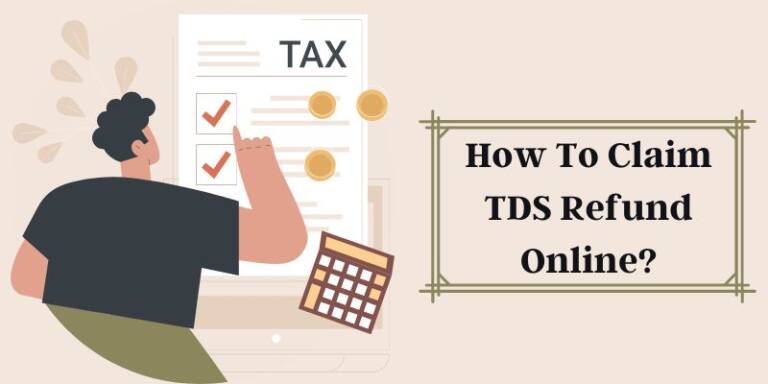How To Claim TDS Refund Online
Introduction
TDS is a type of advance tax paid to the central government on a regular basis by the deductor. After filing their ITR, the deductee can seek a tax refund of the amount deducted from their income on the basis of FORM 26AS for TDS certificate issued by the deductor. There are, however, exceptions to deducting TDS. Individuals are not required to deduct TDS when paying rent or professional costs such as doctors and lawyers.
What exactly is TDS Refund?
TDS refunds occur only when the tax deducted at source exceeds the taxable amount filed at the end of the fiscal year. When you file your income tax returns for the relevant fiscal year, you can claim the difference between the tax deducted at source and the actual taxable amount as a TDS refund.
- Refund of TDS on Fixed Deposit
If you do not have taxable income yet your bank deducts TDS on your fixed deposit, you may be eligible for a TDS refund.
- You can disclose your income on your income tax return and request a tax refund from the IT department, which will be deposited into your registered bank account.
- Fill out Form 15G with the relevant bank to tell them that your income is less than the taxable limit. As a result, no TDS is levied on FD interest.
- Refund of TDS on Fixed Deposits for Senior Citizens
- If you are a senior citizen – 60 years or older – and have a fixed deposit account, your interest income is exempt from taxation.
- If your fixed-deposit interest income is taxed, you can file Form 15H with your bank to advise them of the lack of income deduction.
- If your bank still deducts TDS on your FD interest, you can get a refund by completing your ITR for the relevant fiscal year.
Online TDS refund claim
Follow these steps to claim a TDS (Tax Deducted at Source) refund online:
- Access the income tax e-filing portal.
- Select “My Account” and then “Refund/Demand Status.”
- Verify your PAN and choose the appropriate evaluation year.
- If a refund is required, choose “Request for Refund Re-issue” and fill out the form.
- Choose between immediate credit and issuing a physical check for your return.
- Verify and submit the refund request.
- The status of the refund can be tracked online, and once processed, the refund amount will be credited or the cheque will be mailed.

Refunds are sent in two ways
- RTGS/NECS: The taxpayer’s bank account number, IFSC code, and valid communication address are necessary to credit the refundable amount straight to the taxpayer’s bank account.
- Paper cheque: A bank account number and contact address are required.
What is Refund Interest?
If the income tax department is late in paying your refund, taxpayers are entitled to interest at the rate of 0.5% per month from April 1 of the assessment year until the date of issuing of refund under section 244A of the Income Tax Act. The interest on refund is only applicable if the total refund exceeds 10% of the income tax payable. However, interest is taxable as “income from other sources.
Conclusion
Online TDS (Tax Deducted at Source) refund claims have become a convenient and effective method. Individuals must first log in to the income tax e-filing portal and file their income tax return in order to begin the refund procedure. Following submission, the refund can be followed using the “Refund/Demand Status” option. If a refund is due, the taxpayer must ensure that their bank account information, including the right IFSC number, is updated on the portal. The cash will be credited to the taxpayer’s registered bank account once the refund is processed by the tax authorities. This online solution eliminates the need for physical papers and simplifies the overall refund claim procedure.



